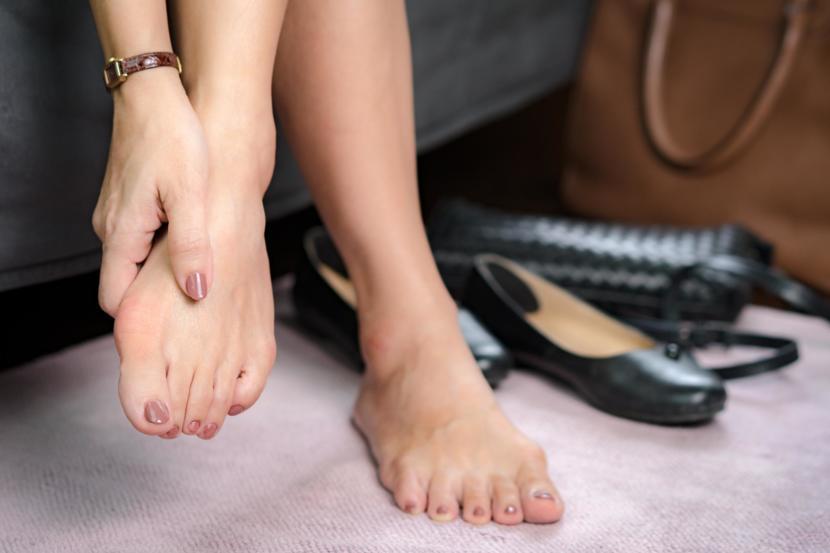All About Bunions

Dr. Felipe Peterson is a podiatrist practicing in St Petersburg, FL. Dr. Peterson is a medical doctor specializing in the treatment of the foot, ankle, and related parts of the leg. As a podiatrist, Dr. Peterson diagnoses and treats conditions of the feet. The feet are key body parts that give a person stability, absorb... more
What is a bunion?
Here you are at the mall feeling good about yourself, just got paid, and cannot wait to go out to your favorite outlet mall and buy a brand-new pair of sandals or shoes. As you are trying on your shoes, you notice that they do not fit quite right. You noticed pain towards your big toe and pressure within the toe box. So, you remove the shoe to make sure there is nothing in there and so you notice an unusual deviation on the side of the big toe with an enlarged bump on the side. What could this be might you ask?
A bunion is a bump that forms on the inside of the big toe when it moves and pushes against the next second toe. While bunions are primarily genetic, ill-fitting narrow-toe boxes and pointed-toed shoes can lead to further pain and deformity. What many people do not know is that bunion deformities are often progressive. Meaning that they tend to get worse with time. The main symptom is typically discomfort and irritation, especially with trying to put on certain kinds of shoes, and even affects one’s balance. However, some patients may also feel pain on the ball of the foot, stiffness, and contraction in the big toe joint itself. The symptoms often progress as the bunion becomes more deformed with a more enlarged bump in the big toe deviated over or under the adjacent toes, often known as a crossover toe deformity.
What are the symptoms of a bunion deformity?
In the early stages of bunion formation, symptoms may be extremely mild. However, as bunions continue to progress, most people would notice that the bony enlargement may become red, irritated, tender, and stiff. If left untreated, symptoms usually progress and may eventually contribute to other compensation deformities within the foot such as accompanying hammertoe deformities, which will be discussed in a separate article. Other signs and symptoms of a bunion include:
- A bulging bump at the base of the big toe
- Swelling redness and soreness around the big toe joint
- Painful thickened skin, corn, and calluses
- Persistent pain with walking standing exercising or with shoe gear
- Restricted motion of the big toe
- Decreased activity or desired activities due to foot pain deformity
- Some patients even feel self-conscious about wearing open-toe shoes in public arenas or events
- This can often affect the patient’s well-being, daily activities of living, inability to fit into desired shoes, and even self-confidence
What are some causes of bunions?
There are several theories and potential causes, however the most likely ones are:
- Genetics and inherited foot type
- Poorly fitting shoes, in particular, narrow-toe box ones
- Trauma and previous injury
- Systemic arthritides such as rheumatoid, psoriatic, gout, or lupus
How is a bunion diagnosed?
A bunion, or medical terminology hallux abducto valgus deformity, is typically diagnosed by a foot doctor during his or her clinical exam and often uses accompanying X-rays to image and determine the severity and the apex of the deformity. During this examination, the bunion can be determined to be mild, moderate, or severe with each having its own appropriate treatment options ranging from conservative to aggressive with some even requiring surgery.
What happens if I do nothing?
During the early insidious mild stages of bunion development, the pain can be typically managed by altering shoe gear and taking oral anti-inflammatories stretching range of motion, and topical pain cream. However, there is a strong chance you can develop some additional symptoms including:
- Arthritis or inflammation of the big toe joint
- Painful calluses
- Accompanying hammertoes and toes crossing over each other, particularly the first and second toes
- Bony spurs
- Ball of foot pain and loss of the plantar fat pad
What are some treatment options for a bunion?
The first to consider are nonsurgical treatments:
- Modifying shoe gear to wide toebox or extra depth shoes
- Toe spacers
- Toe pads and splints
- Shoe inserts and orthotics
- Oral NSAIDs, topical pain creams, or pain injections
The second option would be traditional open surgery:
Utilizing this option, the foot surgeon opened her skin using anywhere from a 2–6-inch incision to access the bones joints tendons, and ligaments in your foot. The outcomes tend to be good overall, however, there is an increased risk of scarring, stiffness, recurrence, and possibly more pain after the procedure.
In more severe bunion deformities, the surgeons may choose to fuse a portion of your midfoot, therefore extending the duration of recovery and time needed to be non-weight-bearing.
Minimally Invasive Bunion Correction
An option that Modern Foot and Ankle Podiatrists provides is that of a minimally invasive or percutaneous bunion correction. This option and use anywhere from 1/8 to 1/4-inch incision. The foot surgeon may perform the bunion deformity with far less soft tissue disruption which may enable a quicker and less painful recovery. Bear in mind that the minimally invasive option may only be suited to mild or moderate bunion deformities. The patient’s entire foot structure deformity and overall medical health have to be taken into consideration for this option, as it is not an option for every bunion but can be considered.
Felipe Peterson, DPM








